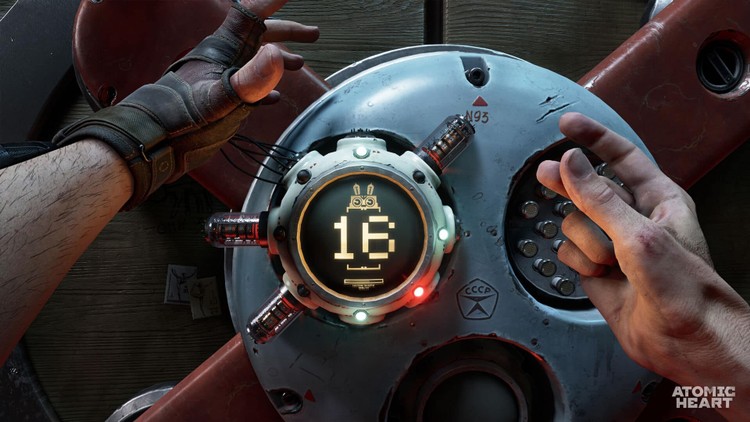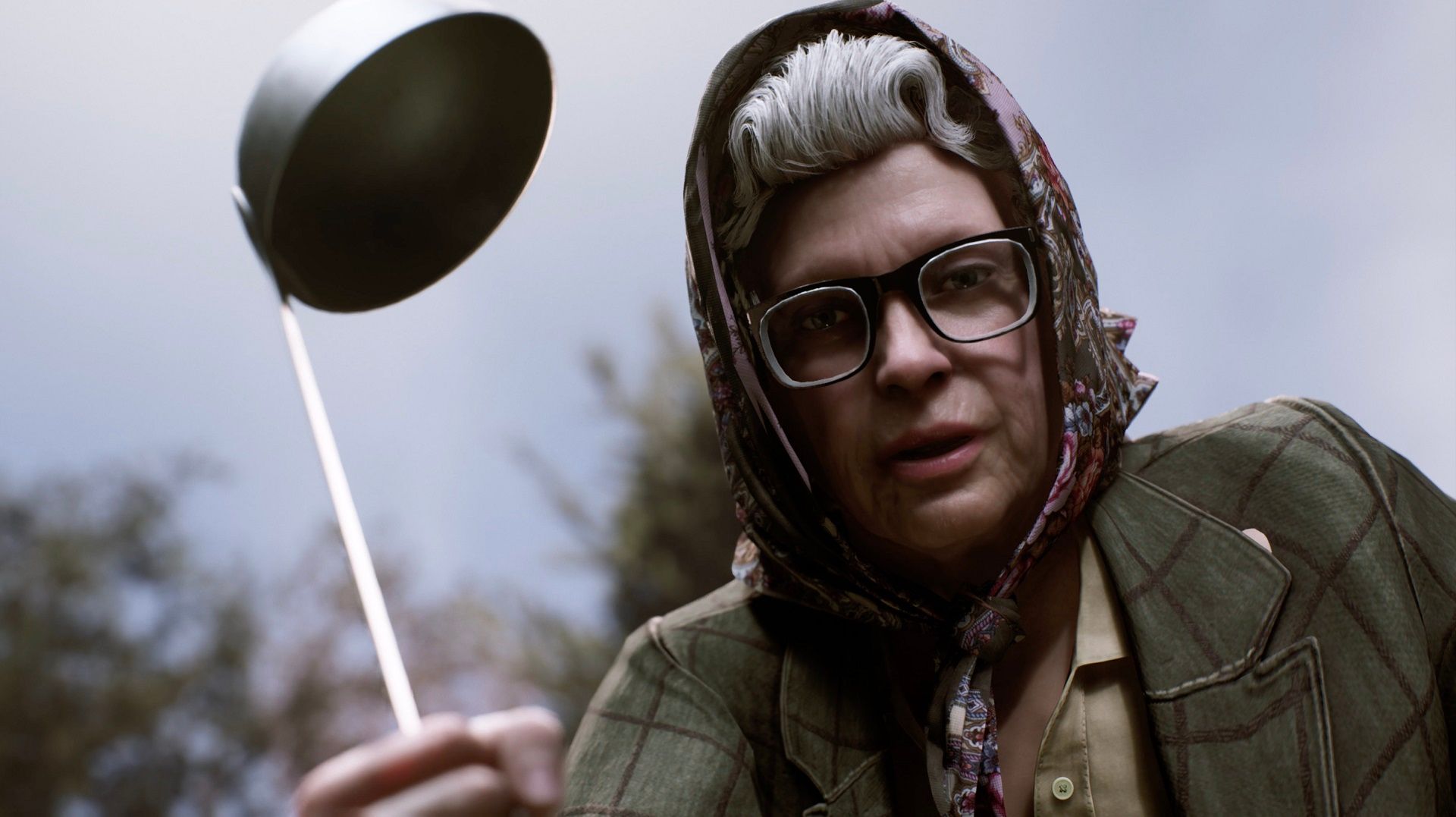
The protagonist, P-3, can obtain a range of weapons, as well as using his glove to unleash energy or powers to attack. If combat is the thing you care about most in a game, it’s possible you’ll find something to like here. And no, this might not be enough to put everyone off, but even if it doesn’t, the dialogue is bad enough in its own right that no matter what they’re talking about, it’s somehow offensive – even if it’s just offensively bad. It’s been a long time since I’ve played a game that hated women this much, and I hoped we’d left it in the past, but I’m sad to say that if this game is anything to go by, the misogyny is alive and well. When men aren’t referring to or directly addressing the very few female characters in this game in consistent condescension, they’re talking about how it’s natural that men in this world can become ‘robosexual’, and obtain robots to be used for this purpose.

The game’s mascots, twin robots modelled after ballet dancers, are objectified and sexualised from the beginning. I can give it the benefit of the doubt and blame some of the cheesiness (like his signature phrase ‘crispy critters!’) on localisation, but at some point I have to assume that the content of the conversations was the same, and the content was often what I objected to more than the delivery.Īnd there are so many different ways to be offended by the content. I don’t know how much of this was because of the translation to English, but every conversation felt rushed and disorganised, with many of the dialogue choices feeling out of place. But the words he says feel like they were written by a teenager with anger issues and a need to prove some kind of dominance. It was hard, because he says every single line with a weird sense of urgency and aggression that is so utterly antagonistic to every person he speaks to, even if they’re an ally. Maybe others will have more luck, but I struggled.Įvery time the protagonist – who seemed like he’d been transplanted from an early 2000’s era game – opened his mouth, all I wanted to do was tune him out. I think somewhere along the way, the goal was to make a philosophical statement on whether or not communism is a good thing, but the way this game’s narrative is delivered makes it hard to follow along with its central thesis. The biggest difference is the game’s setting, which takes place in a post-war alternate universe where the Soviet Union was victorious, meaning the world now predominantly lives under communism. There are many other comparisons to be drawn, some of which are related to the story that, no matter how much I disliked it, I don’t want to spoil. Russian, edgy Bioshock with sex robots and – admittedly – more modern and nicer looking graphics.

Since it was first announced, Atomic Heart has been likened to the much-loved Bioshock series.

But I want to preface this review by saying that Player 2 stands with Ukraine, and if you want to avoid this game based on the external controversy, I wouldn’t blame you.īut even if none of that were at play here, I still wouldn’t recommend this game. This article from Kotaku ’s Isaiah Colbert did a more thorough job of explaining it than I will here. This response may or may not be coming from a place of fear or uncertainty, or may be tied to the fact that some key parties in the game’s development are based in Russia, but we can only speculate on that. This Bioshock-esque action game has been surrounded by controversy for months, mostly due to developer Mundfish’s noncommittal response to questions about their stance on the invasion of Ukraine. It's also about the competition between the USSR and the United States at that time.There are reasons you might choose not to play Atomic Heart, even before you read a review of the game’s content. 'Atomic Heart' has several meanings, and it's not only the machine core. If all these Soviet robots were really created in the 50s, all the technology that resembles the early Internet – this could be interesting if one of the key global superpowers pulled ahead instead of the other during the Cold War. We at Mundfish are huge fans of science fiction and we wanted to show this world in such a way that you would start wondering – this could all turn out to be true if the history went in a different direction. Stanislaw Lem, Arkady and Boris Strugatsky, science fiction magazine 'Tekhnika Molodezhi' – the '50s–'60s era – it is the golden age in science, arts, architecture. Mundfish: First of all, we've drawn inspiration from the Soviet sci-fi and the space discovery era in the USSR.

IGN : What have been your inspirations for Atomic Heart? It seems to remind many folks of BioShock (in a very good way).


 0 kommentar(er)
0 kommentar(er)
